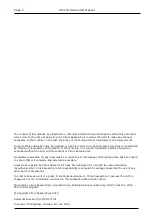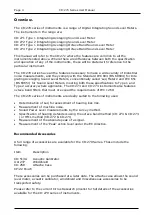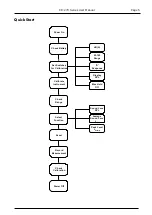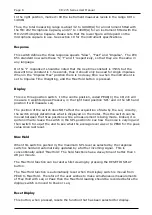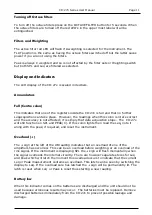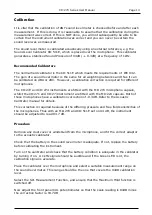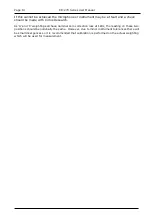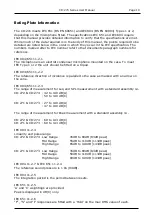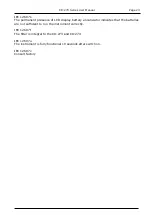
CR:270 Series User Manual
Page 16
Selection of Hearing Protection
Prescription of hearing defenders, either ear plugs, muffs or defenders may be an important part
of a noise measurement and control programme.
Because of the wide range of hearing defenders that are available, as well as the different
methods of determining suitable units, this is often a complex and time consuming process.
Manufacturers of hearing defenders will provide information about the attenuation that their
products will give. This information may be given in one of several different ways depending
upon the method favoured. Most manufacturers however now give the information in all formats
to allow the user to select the most appropriate procedure.
There are currently 4 major methods used for choosing a suitable hearing defender, and these
have a hierarchy of importance and potential accuracy. Wherever possible, the most complex
and accurate method should be used.
BS EN 458:1993 titled "Hearing protectors - Recommendations for selection, use, care and
maintenance - Guidance document" describes the processes involved and the order in which
these should be applied if appropriate.
Octave Band Method
The Octave band method is a straightforward noise reduction calculation involving the
measurement of the workplace noise levels in octave bands and the octave band attenuation
information for the particular hearing protector under investigation.
HML Method
The HML method specifies three attenuation values H,M and L, determined from the octave band
attenuation of the hearing defender. These values, when combined with a measurement of the A
and C weighted sound levels of the noise, are used to calculate the Predicted Noise level
Reduction (PNR) which is then subtracted from the measured A weighted sound level to
calculate the A weighted sound pressure level effective to the ear when the hearing protection is
worn.
HML Check
The HML check is an abbreviation of the HML method that does not require such a high level of
information for the noise as does the HML method.
SNR Method
The SNR Method specifies a single attenuation value, the Simplified Noise level Reduction (SNR).
Like the PNR, the SNR is subtracted from ab overall sound level measurement, in this case the C
weighted sound level, to calculate the A weighted sound level effective to the ear when using the
ear protection.

